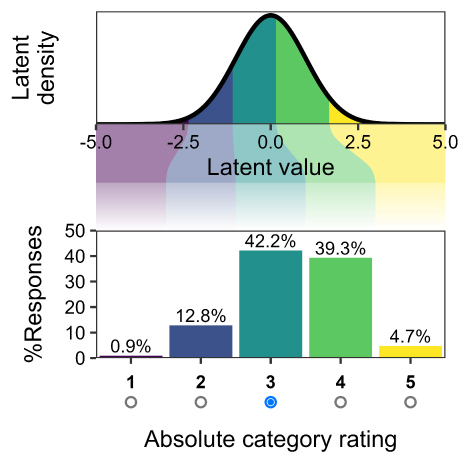
Evaluating perceptual image and video quality is crucial for multimedia technology development. This study investigated nation-based differences in quality assessment using three large-scale crowdsourced datasets (KonIQ-10k, KADID-10k, NIVD), analyzing responses from diverse countries including the US, Japan, India, Brazil, Venezuela, Russia, and Serbia. We hypothesized that cultural factors influence how observers interpret and apply rating scales like the Absolute Category Rating (ACR) and Degradation Category Rating (DCR). Our advanced statistical models, employing both frequentist and Bayesian approaches, incorporated country-specific components such as variable thresholds for rating categories and lapse rates to account for unintended errors. Our analysis revealed significant cross-cultural variations in rating behavior, particularly regarding extreme response styles. Notably, US observers showed a 35–39% higher propensity for extreme ratings compared to Japanese observers when evaluating the same video stimuli, aligning with established research on cultural differences in response styles. Furthermore, we identified distinct patterns in threshold placement for rating categories across nationalities, indicating culturally influenced variations in scale interpretation. These findings contribute to a more comprehensive understanding of image quality in a global context and have important implications for quality assessment dataset design, offering new opportunities to investigate cultural differences difficult to capture in laboratory environments.

In a subjective experiment to evaluate the perceptual audiovisual quality of multimedia and television services, raw opinion scores offered by subjects are often noisy and unreliable. Recommendations such as ITU-R BT.500, ITU-T P.910 and ITU-T P.913 standardize post-processing procedures to clean up the raw opinion scores, using techniques such as subject outlier rejection and bias removal. In this paper, we analyze the prior standardized techniques to demonstrate their weaknesses. As an alternative, we propose a simple model to account for two of the most dominant behaviors of subject inaccuracy: bias (aka systematic error) and inconsistency (aka random error). We further show that this model can also effectively deal with inattentive subjects that give random scores. We propose to use maximum likelihood estimation (MLE) to jointly estimate the model parameters, and present two numeric solvers: the first based on the Newton-Raphson method, and the second based on alternating projection. We show that the second solver can be considered as a generalization of the subject bias removal procedure in ITU-T P.913. We compare the proposed methods with the standardized techniques using real datasets and synthetic simulations, and demonstrate that the proposed methods have advantages in better model-data fit, tighter confidence intervals, better robustness against subject outliers, shorter runtime, the absence of hard coded parameters and thresholds, and auxiliary information on test subjects. The source code for this work is open-sourced at https://github.com/Netflix/sureal.